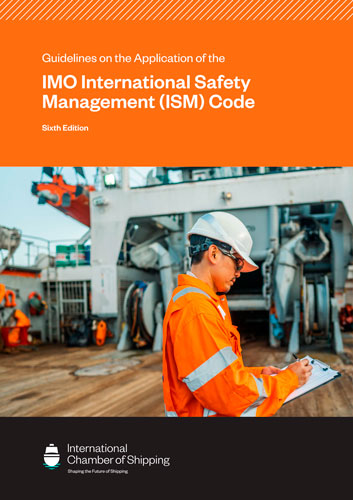Сб с 10 до 16
Guidelines on the Application of the IMO International Safety Management (ISM) Code/Руководство по применению Международного кодекса ИМО по управлению безопасностью
Книга на английском языке
More than 25 years have passed since compliance with the International Maritime Organization’s (IMO) International Management Code for the Safe Operation of Ships and for Pollution Prevention (ISM Code ) first became mandatory for shipping companies operating most types of merchant ship. This latest edition of the International Chamber of Shipping's (ICS) Guidelines on the Application of the IMO International Safety Management (ISM) Code contains new guidance that draws on the industry’s experience of putting into practice the Code’s provisions since 1998. It has been extensively reviewed by designated persons ashore (DPAs) from both smaller and larger companies to ensure that the guidance is relevant to all operators.
The publication aims to help shipping companies operating ships in all sectors and trades develop, implement, maintain and improve their ISM Code-mandated safety management system (SMS), and to support the continuous improvement of the safety and environmental management skills of their shore-based and shipboard personnel.
Content
Abbreviations
Definitions
Editorial note
Chapter 1 Introduction
1.1 Context
1.2 Objectives of the ISM Code
1.3 Objectives of the safety management system
1.4 Stakeholders
1.5 Complexity
Chapter 2 Elements of an effective SMS
2.1 Introduction
2.2 Safety and environmental protection policy
2.3 Commitment
2.4 Communication
2.5 Roles
2.6 Resources
2.7 Risk assessments
2.8 Procedures
2.9 Documentation
2.10 Verification
Chapter 3 Tools for an effective SMS
3.1 Simplifying the SMS
3.2 Developing procedures and checklists
3.3 Creating effective management and leadership
3.4 Assessing risks
3.5 Using technology
3.6 Using data
3.7 Learning lessons
3.8 Learning from success
Chapter 4 Internal audits
4.1 Types of audit
4.2 Responsibilities of the DPA, master and the internal auditor
4.3 Ensuring that an internal auditor is competent, and assigning auditors
4.4 How to conduct an audit
4.5 Scheduling an audit
4.6 Preparing and planning an audit
4.7 Conducting the audit
4.8 Preparing the audit report
4.9 Corrective actions and follow-ups
Appendices




